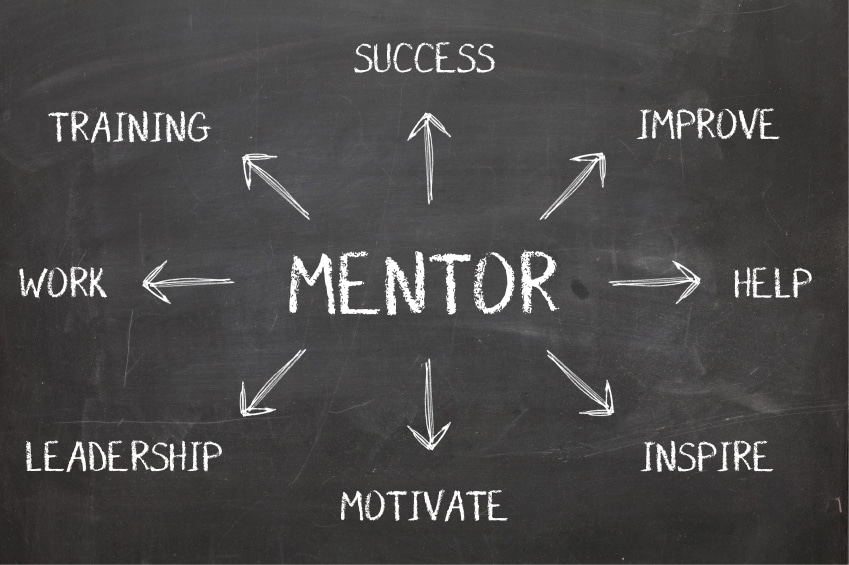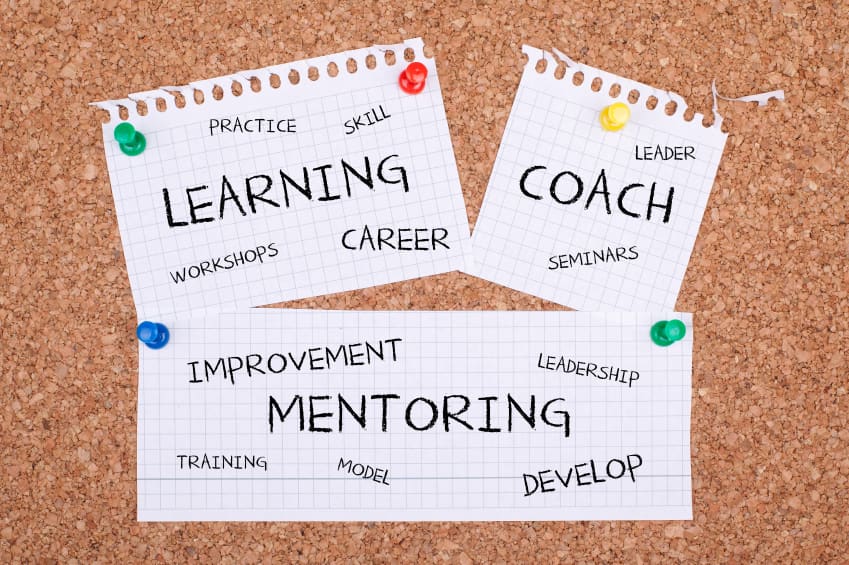Coaching and mentoring both play a valuable role in contemporary business.
Without a real understanding of their differences, however, it is difficult to know when to use them – and impossible to use them to full effect.
This is an area of confusion for many CEOS and managers who use the terms ‘coaching’ and ‘mentoring’ interchangeably.
Managers also remain unaware of the power of coaching tools in developing their employees’ capacity, or lack the training to use them effectively.
Neglect of this essential area means the true potential of your staff is never unlocked, with many employees firing on 65% or 75% when they could be firing on close to 100%.
You could also lose your top performers who are constantly looking for new ways to advance and challenge themselves.
Let’s take a look at the definitions of coaching and mentoring before examining how coaching can rejuvenate your workplace.
Coaching
The essence of coaching lies in opening up employees’ true potential, and showing them how they can maximise their own performance.
The key lies within each individual worker. Whether they know it’s there, however, is quite a different matter.
It’s up to the coach to help the individual find the key and learn how to use it. This can be done via a series of techniques and tools designed to develop creative thinking, smart problem-solving and a questioning mind.
It’s not about teaching, or giving a set series of instructions, both of which can stifle an individual’s self-awareness and ability to negotiate their own challenges.
The emphasis is on guiding the individual towards their own, unique solutions.
Coaching helps individuals look at problems in a new light, then act upon them in the most effective way.
It’s helping someone to learn without teaching them – and that involves a sophisticated, professional approach which teases out an employee’s best without trampling it.

Mentoring
The concept of business mentoring is closer to an apprenticeship, with an older, experienced person taking care of the education of a younger, inexperienced recruit.
Mentoring has its roots in Greek mythology, where Odysseus set out for Troy and entrusted the education of his son Telemachus to his friend, Mentor.
“Tell him all you know,” Odysseus said. Which obviously assumed that Mentor had all the answers – and didn’t need any coaching himself!
This exposes a problem inherent in the mentoring process. The education the person receives will vary enormously, depending on the quality of the mentor’s skills and their ability to explain these and pass them on.
The most brilliant and effective operator may lack the means to empathise with their ‘apprentice’. It might be hard for them to explain complex processes. And modus operandi which suit the mentor may not be realistic for the apprentice.
Out-dated ways of operating and clunky thought processes can also be transferred to the unsuspecting learner, who will generally lack the means or perspective to challenge them.
So ‘tell me all you know’ is fine – as long as what you know is well thought-out, creative, adapted to a contemporary workplace and inherently questioning.
Today’s employee needs not only facts and skills but a flexible, enquiring mind.
Which is why coaching can be so useful in today’s digital and fast-changing workplace.
The essential differences between coaching and mentoring
- Short-term versus long-term. Coaches can work with an individual for anything from a few sessions to a few years, while mentoring is a long-term process dependent on the establishment and development of a relationship.
- Performance versus personal. Coaching is performance-based, while mentoring focuses on developing the individual in ways beyond workplace performance – personal traits, presentation and work-life balance for instance.
- Task versus relationship. Coaching is focused on specific tasks and organisational outcomes while mentoring acts as a sounding board for the employee to explore wider personal, life and work issues through the mentor-apprentice relationship.

Coaching: practical application and vital tools
Used in tandem, coaching and mentoring can challenge, inspire and empower your staff.
Professional coaching, however, is the performance-based solution which can really shake up stagnant workplaces and draw the best from your employees.
Coaching programs are proven people solutions, as shown in the study Executive Coaching: An HR View of What Works.
Research by Dr Gavin Dagley in association with the Australian Human Resources Institute surveyed more than a thousand individual coaching programs, identifying a large range of benefits for both executives and organisations.
Average success ratings were reported as falling between “moderately” and “very effective,” with no HR professionals rating their programs below moderately effective.
So what can you expect from a professional external coach?
- Smart questioning. The best coaches ask targeted questions – Why is that good? Is there another way of looking at it? Have your considered this? – rather than supplying the answer themselves.
- Smart tools. Professional coaches use JobFit techniques to develop coaching programs tailored to the individual employee, based on psychometric assessment of their critical job attributes and behavioural characteristics.
- Customised coaching reports. These are given to managers with specific suggestions for developing the full potential of individual staff members.
- Management coaching. Managers benefit from coaching just as much as general employees. It’s a form of ‘training the trainer’. Coaching the manager to be a better coach is a vital step in rejuvenating lacklustre workplaces – right up the line.
Top coaches are just as comfortable working with CEOS as they are developing new recruits at ground level, so you don’t have to limit your coaching to any specific workplace group.
Get in touch today to unlock the real power and performance of business coaching.





